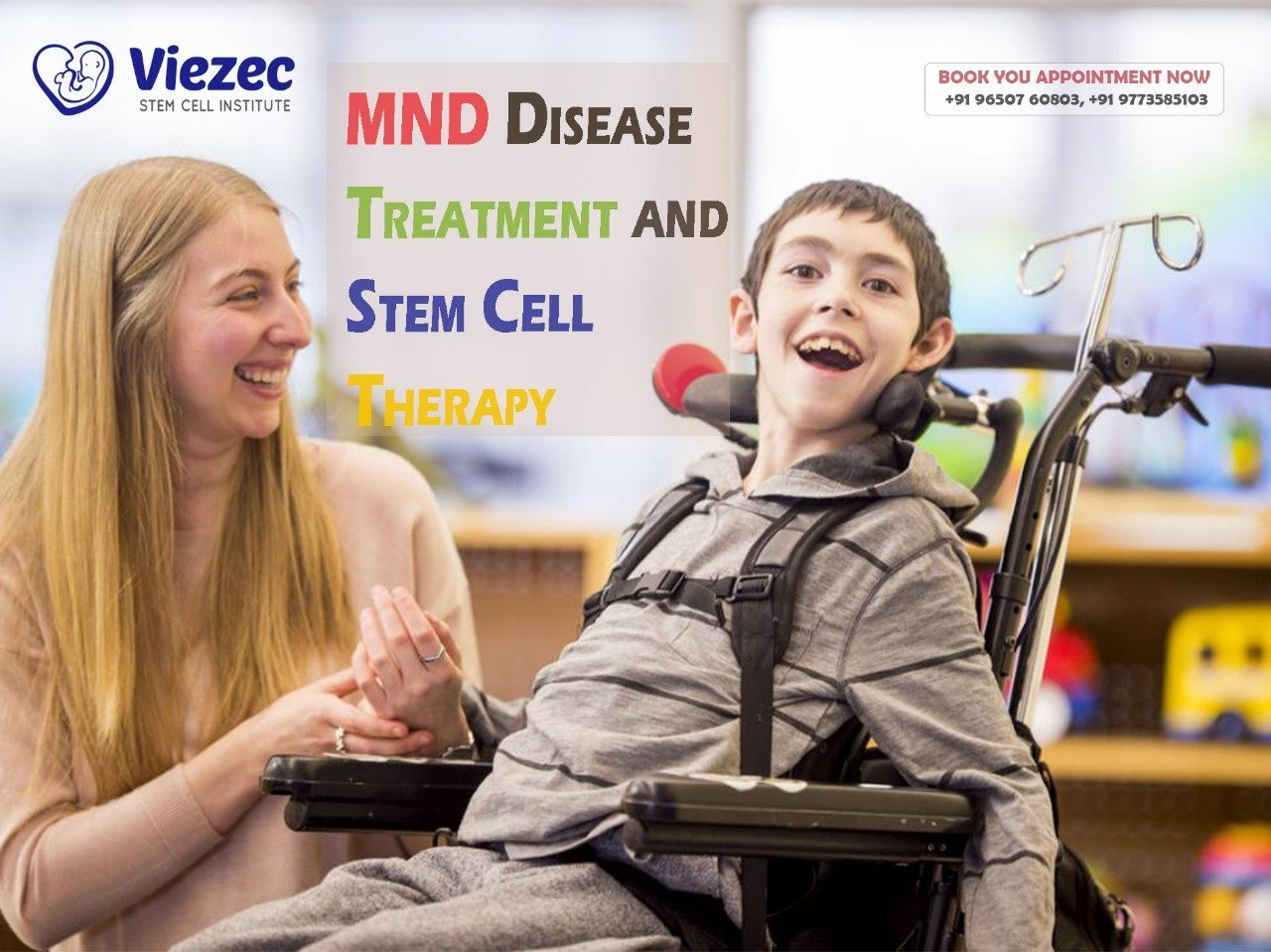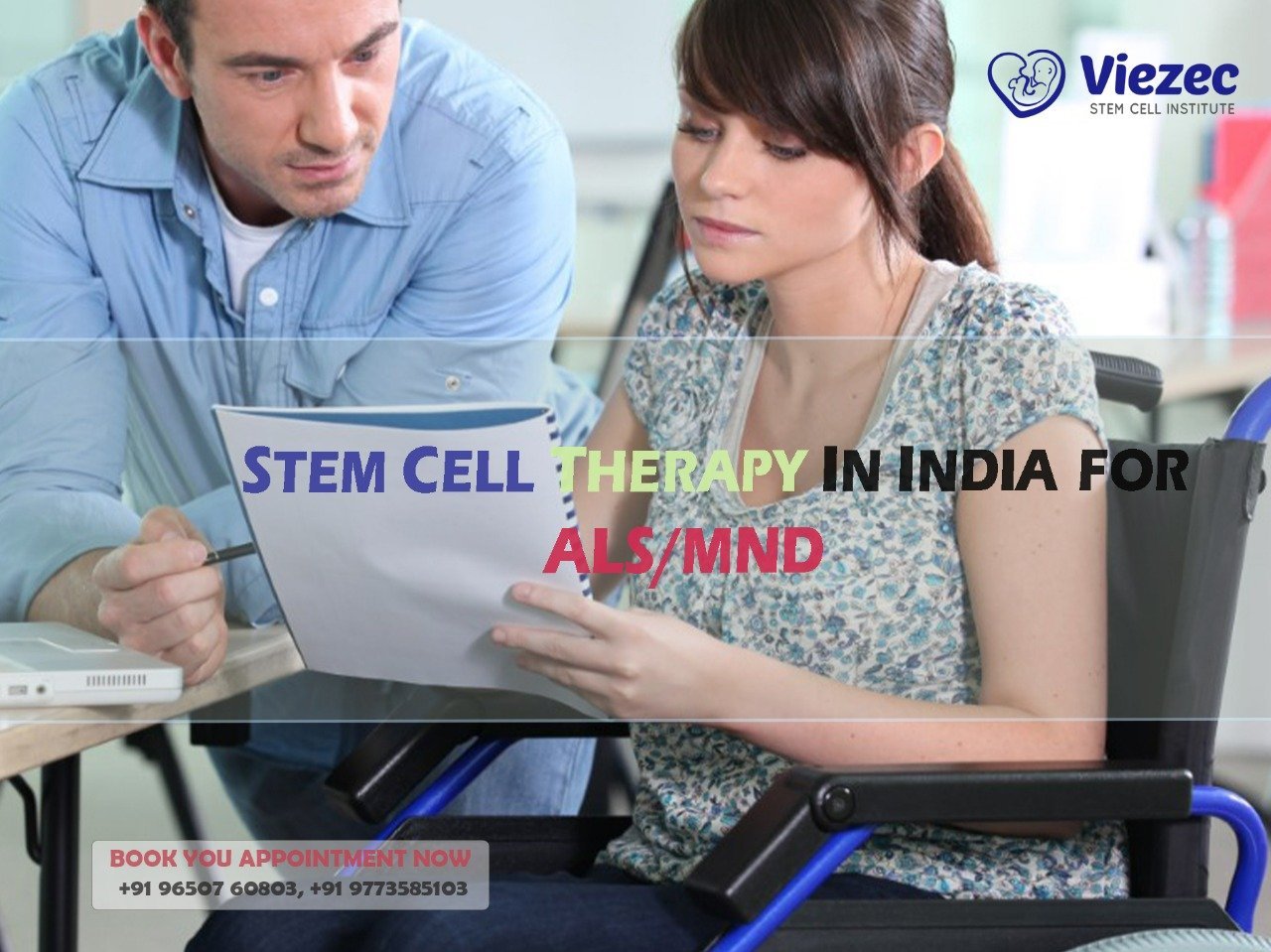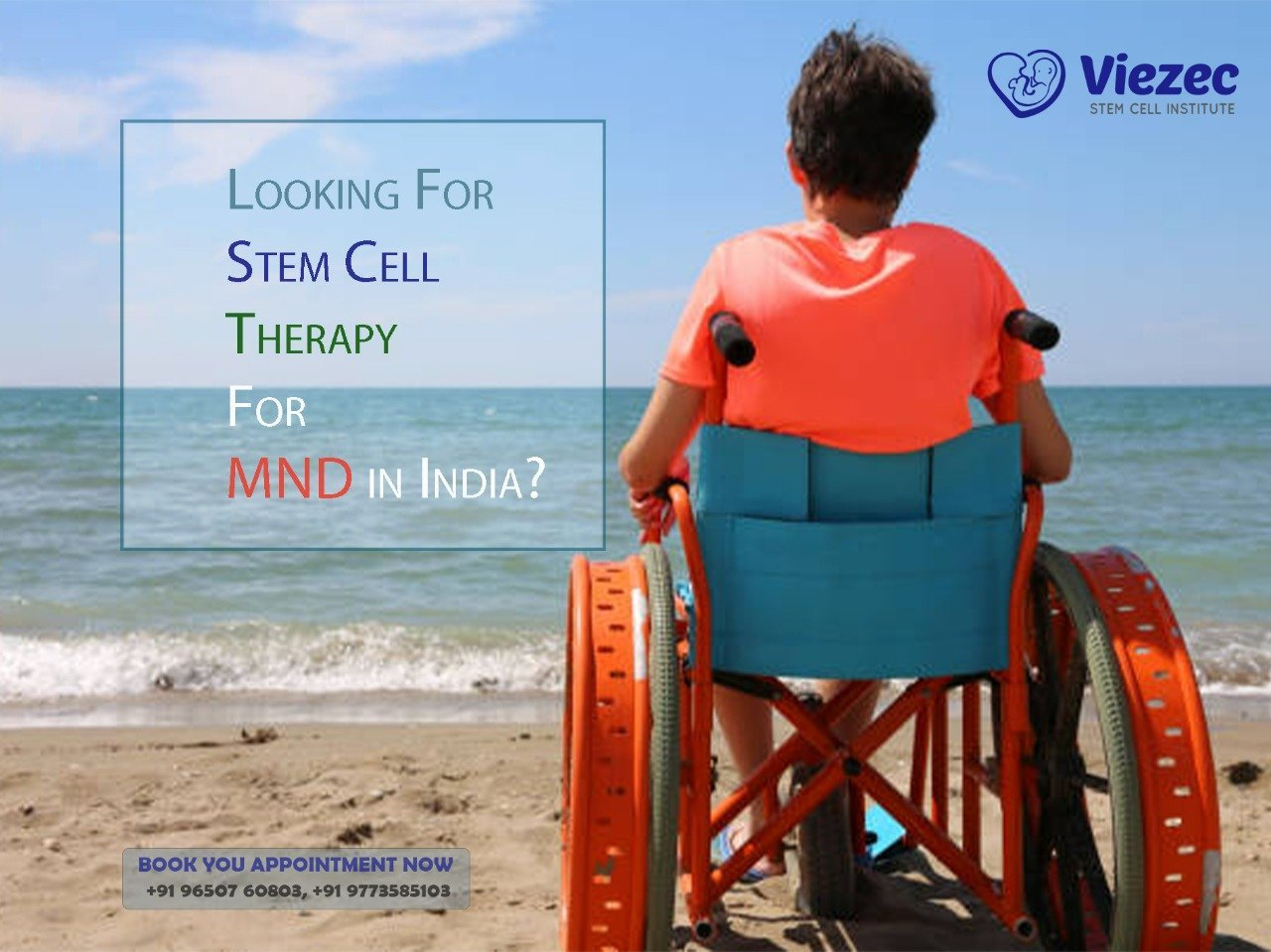Motor Neuron Disease (MND) is a group of neurodegenerative disorders that selectively affect motor neurons, the cells responsible for controlling voluntary muscles. These diseases are characterized by the gradual weakening and wasting away of muscles, leading to loss of movement, speech, swallowing, and breathing. MND can be classified into several types, including Amyotrophic Lateral Sclerosis (ALS), Primary Lateral Sclerosis (PLS), Progressive Muscular Atrophy (PMA), and Spinal Muscular Atrophy (SMA). Each type varies in symptoms, progression, and prognosis, but they all share the common feature of motor neuron degeneration. Early symptoms of MND often include muscle weakness, cramps, and twitching, which progressively worsen over time.
Significance of Stem Cell Therapy in MND
Stem cell therapy has emerged as a promising avenue for treating MND due to its potential to regenerate damaged tissues and restore function. Unlike traditional treatments that primarily manage symptoms, stem cell therapy aims to address the underlying causes of motor neuron degeneration. The purpose of this guide is to provide an in-depth understanding of how stem cell therapy can be used to treat MND, the mechanisms behind its effectiveness, and the various treatment options available. This guide also explores the benefits, risks, and considerations associated with stem cell therapy for MND, offering insights into its potential to improve the quality of life for individuals affected by this debilitating condition.
Understanding Motor Neuron Disease (MND)
Definition and Classification
Motor Neuron Disease encompasses several disorders that affect the motor neurons. The most well-known type is Amyotrophic Lateral Sclerosis (ALS), also known as Lou Gehrig’s disease. ALS affects both upper and lower motor neurons, leading to rapid progression of muscle weakness and atrophy. Primary Lateral Sclerosis (PLS) involves only the upper motor neurons, resulting in a slower progression and primarily affecting muscle stiffness. Progressive Muscular Atrophy (PMA) targets lower motor neurons, leading to muscle wasting. Spinal Muscular Atrophy (SMA), often diagnosed in childhood, affects motor neurons in the spinal cord, causing muscle weakness and atrophy. The epidemiology and prevalence of these diseases vary, with ALS being the most common form of MND.
Causes and Risk Factors
The exact cause of MND is not fully understood, but it is believed to result from a combination of genetic and environmental factors. Genetic mutations have been identified in a significant number of MND cases, particularly in familial ALS. These mutations can affect the function of motor neurons, leading to their degeneration. Environmental factors, such as exposure to toxins, heavy metals, and certain viruses, may also contribute to the development of MND. Lifestyle factors, including smoking and poor diet, have been associated with an increased risk of developing MND. Ongoing research aims to better understand these risk factors and their interplay in the development of MND.
Symptoms and Diagnosis
Early signs and symptoms of MND often include muscle weakness, cramps, twitching, and stiffness. As the disease progresses, these symptoms become more severe, leading to significant loss of mobility and function. Difficulty speaking, swallowing, and breathing are common as the muscles responsible for these actions weaken. Diagnosis of MND typically involves a combination of clinical evaluation, electromyography (EMG), nerve conduction studies, and imaging tests such as MRI. Blood and genetic tests may also be used to rule out other conditions and identify specific genetic mutations associated with MND. Early and accurate diagnosis is crucial for managing the disease and exploring treatment options.
Overview of Stem Cell Therapy
What Are Stem Cells?
Stem cells are unique cells with the ability to develop into various specialized cell types. They are characterized by their capacity for self-renewal and differentiation. There are several types of stem cells, including embryonic stem cells, adult stem cells, and induced pluripotent stem cells (iPSCs). Embryonic stem cells are derived from early-stage embryos and have the potential to become any cell type in the body. Adult stem cells, found in various tissues, have a more limited differentiation potential but are essential for tissue repair and regeneration. Induced pluripotent stem cells (iPSCs) are adult cells that have been reprogrammed to an embryonic-like state, offering a versatile and ethically viable source for regenerative medicine.
Mechanism of Action in MND
Stem cell therapy for MND aims to replace or repair damaged motor neurons and support the survival and function of existing neurons. Stem cells can differentiate into motor neurons or other supportive cells, integrating into the nervous system and restoring lost functions. Additionally, stem cells secrete neurotrophic factors that promote neuron survival, reduce inflammation, and protect against further damage. While the potential benefits of stem cell therapy in MND are significant, there are also limitations. The complex environment of the nervous system, challenges in cell delivery and integration, and potential risks such as immune rejection and tumor formation are areas that require further research and refinement.
Stem Cell Therapy in Treating MND
Types of Stem Cell Therapies
Several types of stem cell therapies are being explored for the treatment of MND. Mesenchymal stem cells (MSCs), derived from bone marrow or adipose tissue, have shown promise due to their ability to modulate the immune system and secrete neuroprotective factors. Neural stem cells (NSCs), found in the central nervous system, can differentiate into neurons and glial cells, potentially replacing damaged motor neurons. Induced pluripotent stem cells (iPSCs) offer a patient-specific approach, allowing for the generation of motor neurons from a patient’s own cells, reducing the risk of immune rejection. Each type of stem cell therapy has its advantages and challenges, and ongoing research is focused on optimizing their use for MND treatment.
Methods of Administration
The administration of stem cell therapy for MND can be done through various methods. Intravenous infusion involves delivering stem cells directly into the bloodstream, allowing them to reach affected areas throughout the body. This method is less invasive and can be done relatively easily. Intrathecal injection, on the other hand, involves injecting stem cells directly into the cerebrospinal fluid, closer to the spinal cord and brain, where motor neurons are located. This method ensures a higher concentration of stem cells in the target area but is more invasive and requires careful monitoring. The choice of administration method depends on the type of stem cells used, the patient’s condition, and the desired outcomes.
Benefits of Stem Cell Therapy for MND
Neurological Improvements
Stem cell therapy has the potential to significantly improve neurological function in individuals with MND. By replacing damaged motor neurons and supporting the survival of existing neurons, stem cell therapy can enhance motor function, reduce muscle weakness, and improve coordination. Cognitive and behavioral improvements have also been observed, as stem cells can modulate the environment of the nervous system, promoting overall brain health. These neurological improvements can lead to better quality of life, increased independence, and the ability to perform daily activities more effectively.
Quality of Life Enhancements
In addition to neurological improvements, stem cell therapy can enhance the overall quality of life for individuals with MND. Physical health benefits include improved muscle strength, reduced pain and discomfort, and better mobility. Emotional and psychological benefits are also significant, as improved physical function can lead to increased confidence, reduced anxiety and depression, and a more positive outlook on life. Stem cell therapy offers hope for individuals with MND, providing a potential pathway to better manage the disease and maintain a higher quality of life.
Leading Stem Cell Treatment Centers
Top Clinics and Hospitals Worldwide
There are several leading clinics and hospitals worldwide that specialize in stem cell therapy for MND. These institutions are at the forefront of research and clinical trials, offering advanced stem cell treatments and comprehensive care for individuals with MND. These centers provide cutting-edge treatment options, supported by extensive research and clinical expertise.
Specialized Treatment Programs
Specialized treatment programs at these leading centers offer tailored treatment plans to meet the unique needs of each patient. These programs often include a combination of stem cell therapy, physical therapy, occupational therapy, and psychological support. Success rates and testimonials from patients who have undergone stem cell therapy at these centers highlight the potential of these treatments to improve symptoms and enhance quality of life. These programs emphasize a holistic approach to MND treatment, addressing both the physical and emotional aspects of the disease.
The Treatment Process
Pre-Treatment Assessments
The treatment process for stem cell therapy begins with thorough pre-treatment assessments. Initial consultations and evaluations are conducted to determine the patient’s suitability for stem cell therapy, considering factors such as disease progression, overall health, and medical history. Detailed assessments, including imaging and laboratory tests, are performed to establish a baseline and guide the treatment plan. Preparing for treatment involves educating the patient about the procedure, potential benefits, and risks, and obtaining informed consent.
Stem Cell Harvesting and Preparation
Stem cell harvesting involves obtaining stem cells from a suitable source, which can include the patient’s own bone marrow or adipose tissue, or from a donor. The harvested cells are then processed and cultivated to ensure they are viable and in sufficient quantity for treatment. Advanced techniques are used to purify and expand the stem cells, maintaining their ability to differentiate and integrate into the nervous system. This preparation phase is critical to the success of the treatment, ensuring the stem cells are ready for administration.
Administration of Treatment
The administration of stem cell therapy involves delivering the prepared
stem cells to the patient. The procedure details vary depending on the method of administration, whether it is intravenous infusion or intrathecal injection. Intravenous infusion is typically performed on an outpatient basis, while intrathecal injection may require hospitalization. Post-treatment care and monitoring are essential to track the patient’s response to the therapy, manage any potential side effects, and ensure the stem cells are effectively integrating and providing the desired benefits. Regular follow-up appointments and assessments are conducted to evaluate the long-term effectiveness of the treatment and make any necessary adjustments to the care plan.
FAQs
1. What is Motor Neuron Disease (MND)?
Motor Neuron Disease (MND) is a group of neurodegenerative disorders that affect motor neurons, leading to muscle weakness, atrophy, and loss of voluntary movement. Common types include ALS, PLS, PMA, and SMA.
2. How does stem cell therapy work for MND?
Stem cell therapy aims to replace or repair damaged motor neurons, support neuron survival, and reduce inflammation. Stem cells can differentiate into motor neurons and secrete neurotrophic factors to promote neuron health.
3. What are the potential benefits of stem cell therapy for MND?
Potential benefits include improved motor function, reduced muscle weakness, enhanced coordination, and overall better quality of life. Emotional and psychological benefits, such as reduced anxiety and depression, may also occur.
4. Are there any risks associated with stem cell therapy for MND?
Risks include immune rejection, potential tumor formation, and complications related to the administration method. Thorough pre-treatment assessments and careful monitoring can help mitigate these risks.









